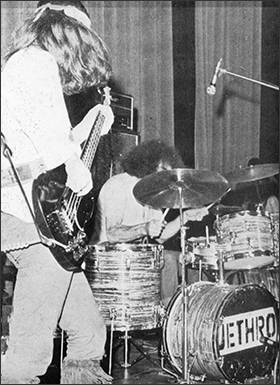
Glenn
Cornick
—————-
By Beppe Colli
Aug. 31, 2014
Concise and elegant, the
bass intro to the 1969 hit single Living In The Past – an agile figure in 5/4,
in its peculiar way quite "funky" – was the first motif played by
Glenn Cornick most people were exposed to.

Of course, having a fresh-sounding instrumental intro that people could easily commit to memory was a typical custom of the day – as a for instance in the same time-space continuum, think of the highly-celebrated bass intro Jack Bruce devised for Cream’s Badge.
Glenn Cornick’s bass figure worked as a kind of intro to a long instrumental passage for flute – an instrument that, while definitely not unheard-of in the rock world, would prove to be a distinctive feature for the group bearing the bizarre name Jethro Tull.
A quite captivating song – hence, #3 in the U.K. charts – Living In The Past had Driving Song as its B-side. The latter being in a "British Blues" vein, guitar riff and all. The rhythm section, however, sounded quite fresh and "jazzy", the bass guitar at the end briefly enjoying the spotlight.
While Living In The Past was the proverbial first step in Jethro Tull’s commercial journey, by that time the group’s story already featured a few chapters: a couple singles, tours that were more and more well-attended, and an album, This Was, which – released in October ’68 – hit the #10 spot in the U.K. charts.
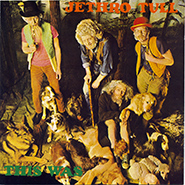
Though the album can be filed under "British Blues" – a "trendy" style at the time – there are some fresh ingredients that keep the formula from turning stale. Playing a Fender Jazz Bass with a left-handed Precision neck, Cornick formulates a style that goes beyond the "Blues box", though within a concise framework.
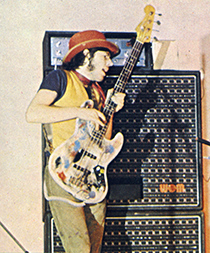
It goes without saying that a great bass player would not sound so great without a drummer acting as a partner, so talking about Cornick necessarily implies talking about his fine musical rapport with Clive Bunker.
Place your stylus at the start of My Sunday Feeling – Side One, Track One, of This Was – in order to enjoy the feel of having a "strong" bass coupled with "light"-sounding drums, cymbals galore, the snare drum definitely featuring the snare. Check the "breathing" space from the hi-hat, and the solo bass passage that takes the track to its close – a passage that has its parallel in the bass part which acts as a kind of "bridge" between the end of the drum solo and the start of the guitar featurette on Dharma For One.
Here Ian Anderson – the group’s singer, multi-instrumentalist, songwriter, and leader – extends his compositional palette beyond the strict confines of "the Blues". Beggar’s Farm is an important track in this respect, its somnambulant mood appropriately complemented by a bass figure which sounds quite "psychedelic". The group cover of Serenade To A Cuckoo by Roland Kirk features Cornick making great use of the percussive quality of his Fender Jazz’s pick-ups.
Having replaced Mick Abrahams with the more versatile Martin Barre, after a few U.S. tours, in August ’69 the group released their second album, Stand Up. A true masterpiece, it will go up to #1 in the U.K. charts (just think: an audience absorbing the jump between This Was and Stand Up without batting an eyelid).
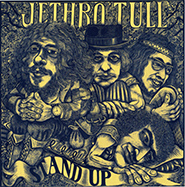
Here I’d like to stress the freshness and the vivacity of the sound and of the instrumental performances featured on the album, which greatly benefits from the technical contribution of engineer Andy Johns.
In order to give readers an idea of the great variety of music featured on Stand Up I’ll mention the Arabic and Indian elements featured on Fat Man and Jeffrey Goes To Leicester Square.
The Blues is still here, though, on songs titled A New Yesterday and Nothing Is Easy. Listen to the rhythm section’s vivacious backing, which at times has Cornick and Bunker coming to the fore.
While Cornick’s instrumental performance on such a famous track as Bourée needs no introduction, I’d like to highlight the diverse dynamics he chose for the track Back To The Family. Here, as elsewhere on the album, his decision to play a short scale instrument such as the Gibson EB-3 – the model made famous by Jack Bruce – makes it possible for him to make use of octave jumps, and a more "guitar-like" approach.
Listen to Cornick play "in the service of the song" on the ballad We Used To Know, and to his tense-sounding groove on For A Thousand Mothers. While it’s nowadays widely accepted that it was Andy Johns, a bass player himself, who played the bass parts on Look Into the Sun, which sound a bit different from what Cornick would play.
Then, the group released two singles. An orchestral arrangement that nowadays sounds quite dated does not play in favour of Sweet Dream, #9 in U.K., Fall ’69. The song features fine work by the rhythm section, a template that will remain for the most part unchanged till Live Bursting Out.
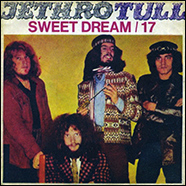
Released in January, 1970, Witch’s Promise – #4 in the U.K. – is a flawless ballad, featuring acoustic guitars, and piano and Mellotron by new member John Evan, anticipating the many moods of Benefit. Fine percussion work by Bunker, Cornick’s bass performance greatly enhancing the arrangement. A more lively B-side, Teacher, features a propulsive bass riff and fine work by Evan on Hammond organ (on the U.K. mix, the U.S. mix being quite different).
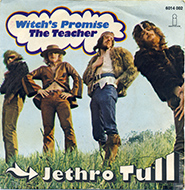
All the stuff previously released only on single – well, almost – plus other stuff was later re-released on the best-of titled Living In The Past (July, ’72), the #3 spot in the U.S. charts coming after the great success of Aqualung (’71) and Thick As A Brick (’72), which went up to #1.
Here I could trace a parallel with the work of Jack Casady of Jefferson Airplane on albums recorded on eight-track – Crown Of Creation (’68) – and sixteen-track – Volunteers (’69). Cornick’s bass on Benefit (released May ’70, #8 in U.K., #11 in the U.S.A.) is less to the fore compared to predecessor Stand Up, the same being true when it comes to the drums. Here the songs sit on a carpet of guitars – both acoustic and electric – the mid-frequencies from the piano making the bass guitar sound less distinct.
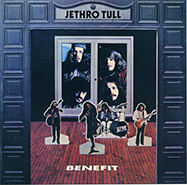
With the obvious exception of Inside – where there’s more bass than song already – Cornick rises to the challenge, playing counterpoint on Nothing To Say, riffs on To Cry You A Song, and those unmistakable parts on With You There To Help Me. To me the bass here sounds like his usual EB-3, not like the semi-acoustic EB-2 he appears "playing" on the album cover.
Quite surprisingly, the story stopped here. For reasons I’ve never seen fully explained anywhere, Cornick was pushed out of the group. His last concerts with Jethro Tull – where he played a long-scale Gibson Thunderbird – saw the group in great spirits, as clearly shown on the CD and the DVD-V titled Nothing Is Easy – Live At The Isle Of Wight 1970. This is the time when the group regularly played a song that will prove to be one of the high points of Aqualung: My God.
Listening to Clive Bunker’s drums coupled with the quite "rigid" bass played by Jeffrey Hammond-Hammond on Aqualung was a very disconcerting experience – Hammond’s bass parts will sound more logical when paired with Barriemore Barlow’s drums, starting with Thick As A Brick.
Even more disconcerting, the fact that the "real" Glenn Cornick story stopped here. There was a group, Wild Turkey, which started promisingly but ended dismally. Then, a few ho-hum groups (the same being true of Cornick’s friend on drums and cymbals, Clive Bunker).
Still, a lot of good music played, with – sadly – no more to come.
Glenn Cornick: musician. April 23rd 1947 – August 29th 2014
© Beppe Colli 2014
CloudsandClocks.net | Aug. 31, 2014


